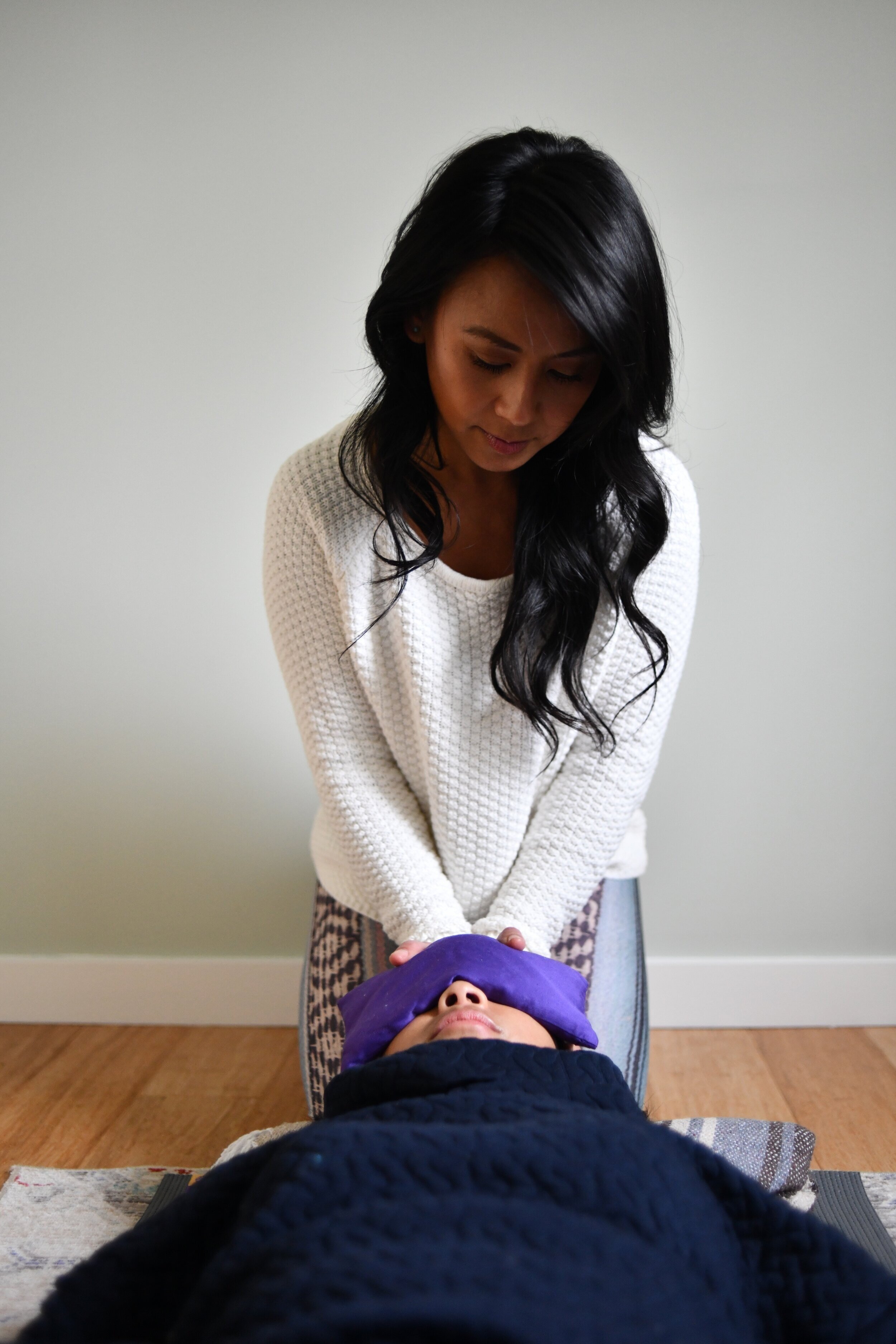Charisse Balance
Location
637 Irving St, San Francisco, CA
Virtual
Pronouns
she/her
Education/Certification
Doctor of Physical Therapy
B.S. Exercise PhysiologyJohn
John Barnes’ Myofascial Release Approach®
Low Pressure Fitness
Yoga Alliance RYT
Postpartum Ayurvedic Support
Pelvic Steam Therapy
Holistic pelvic health: abdominal and pelvic health physical therapy, yoga (restorative, yin, pre/postnatal), vaginal steaming
Words you live by
"Strong but not rigid, Flexible but not weak" - From my friend and yoga teacher Anna Hughes. All aspects of life require a balance of both.
Specific Expertise
Pregnancy and postpartum, chronic pain
How did you decide to become a pelvic floor therapist?
There were two main reasons.
After becoming a generalized PT, I had a chronic pain patient that had slipped and fallen. I knew that she needed a coccyx mobilization, however, felt unequipped to provide her with the care she needed. Internal work and specializing in pelvic health is not typically taught in a general Doctorate of Physical Therapy curriculum. I wanted to help my patient in the right way, so I took my first specialized pelvic floor class. It was then that my mind was blown - I had to learn more!
The second reason was for my own benefit: I knew I wanted to start having kids and I wanted to be proactive in caring for myself during pregnancy and postpartum. I noticed how the system basically disregarded postpartum care (focusing solely on the baby and not the birthing person). Thus, I started my immersion into all of the information and coursework of pelvic health - and I haven't stopped since!
You have created your own method of 'physioyoga'. Can you share more about what this entails? What do your sessions look like?
Physioga is my a unique blend of my favorite things: Physiotherapy and yoga. In treatment, I utilize my yoga and Ayurveda lens to treat in a holistic manner. I consider the entire system: mind, body, diet, emotions, spirit -- as it is all connected. I believe that singling out just the musculoskeletal system in treatment misses so much that could be playing a part of the person I’m working with. I primarily utilize the breath, restorative yoga, yin yoga, and various asana practices to inform my PT treatment and likewise, utilize technical anatomy and evidence-based practices of physical therapy to inform my yoga offerings . It's the best of two worlds that I love!
What is your approach with postpartum patients who are new to pelvic floor therapy?
Working with this specific area of the body can bring up a lot, emotionally and physically. The pelvis is the center of the body. It is the space where life is created. It can also be a place of a lot of trauma. Trust is the most important thing that is established in our sessions together - trust in me as a provider and trust in the patient's own intuition and body. In creating this trust, my intention is to empower each client with information about their own bodies to inform them of what is "normal" and of things we can work on.
Societal standards make it uncomfortable to talk about things like vaginas, penises, sex, pooping, peeing and pain. My goal is to normalize these conversations, because if we can't talk about it, how can we know that there is an issue and more importantly, how can we know to seek help to heal?
My sessions are fun, light hearted, informative, intuitive and intend to provide a sense of connection to you and your body to empower you with tools to manage or overcome your symptoms.
Sex after birth - help! How can pelvic floor therapy relieve painful sex, increase a low libido, and improve pleasure overall?
Picture the pelvic floor as a hammock supporting your pelvic organs. During pregnancy, your uterus goes from being the size of a fist to a watermelon! The effects of pregnancy itself on the body can result in changes to abdominal and pelvic health, not to mention if there is a birth injury such as a perineal tear or a cesarean birth. These things can cause the pelvic floor muscles to be overtightened, as injured muscles tend to guard and fascia tend to hug the area of injury. This can make penetrative intercourse painful and difficult. Additionally, because fascia connects everything in the body, restrictions in the fascia can place pressure on pain sensitive structures such as nerves, contributing to pain and sensitivity to touch. Pelvic health physiotherapy can help to release these areas of restriction, allow the muscles to release, and minimize tension.
I'm experiencing prolapse after birth. Is this normal? What can I do?
50% of women experience pelvic organ prolapse after birth - If you're experiencing symptoms of heaviness, or feel "something that wasn't there before" after wiping - you're not alone! There are various degrees of prolapse, graded by how far the pelvic organs descend the vaginal canal relative to the hymenal remnants. If your prolapse stays within the vaginal canal when you bare down (I'm not recommending that you bare down, this exacerbates the prolapse!), seeing a pelvic floor physical therapist for treatment can definitely help.
What inspires your work?
Birthing people- the amount of fluctuation one's body goes through during pregnancy and birth is a superhuman power! It is my honor to support those who create life, sustain life and deliver life by supporting them in this way.
The incredible birth community around me in San Francisco also inspires me: I've met SO many amazing, knowledgeable providers on my personal path as a birthing person and have worked with them professionally as well. Their passion for supporting birthing people inspires me immensely.

